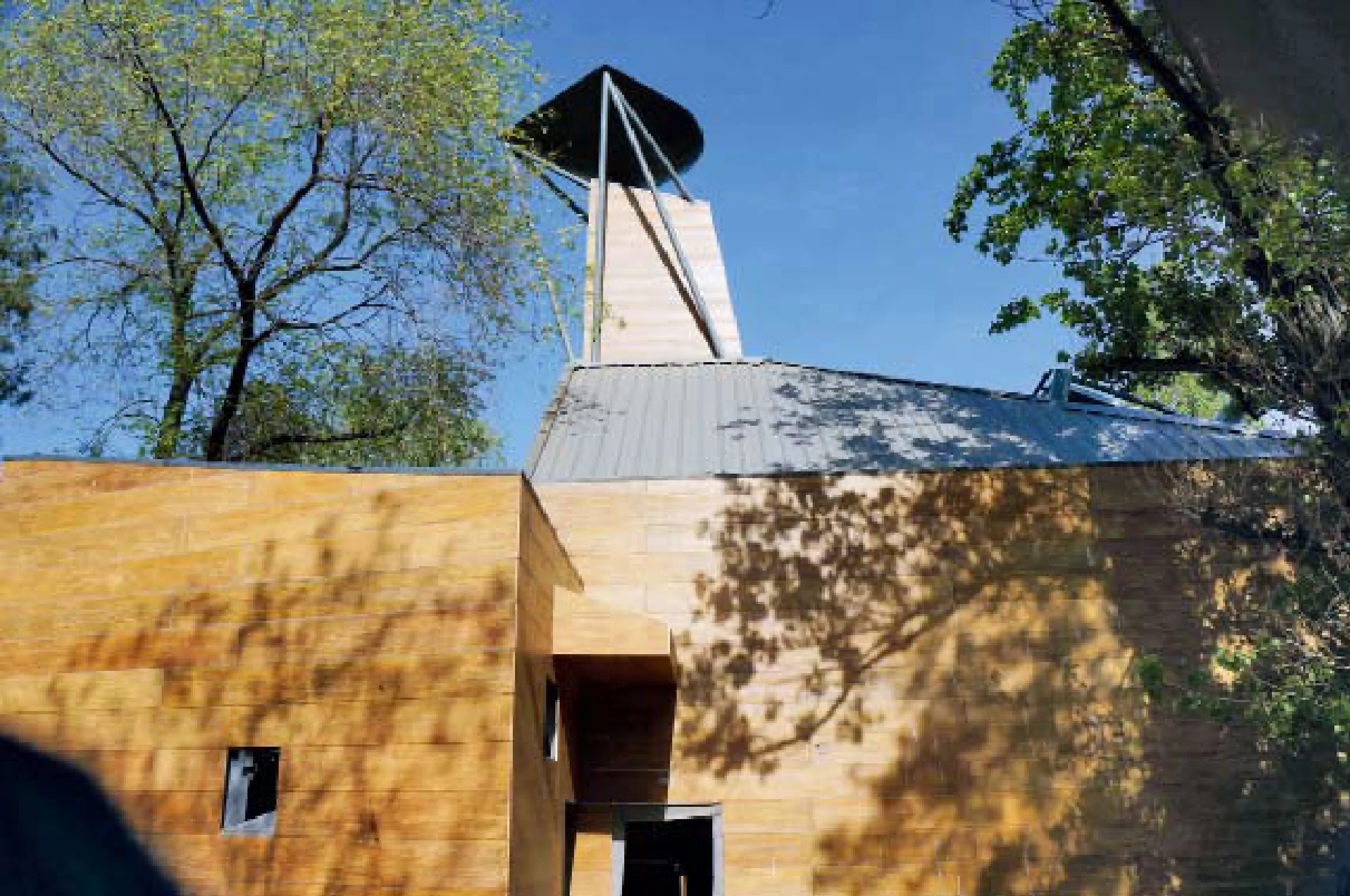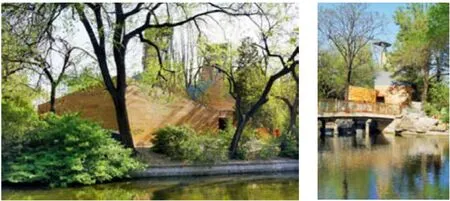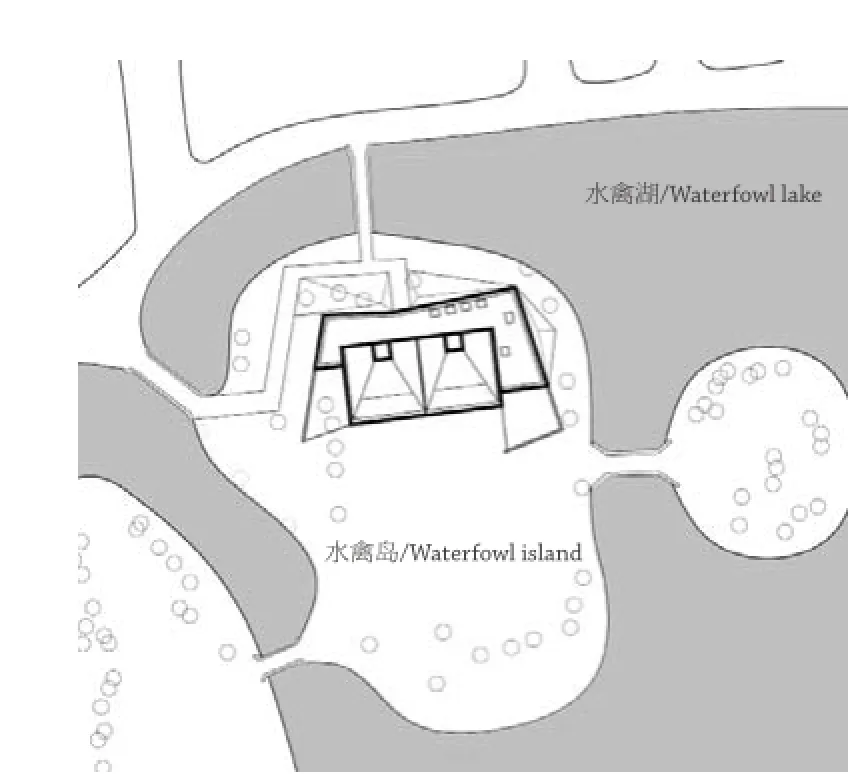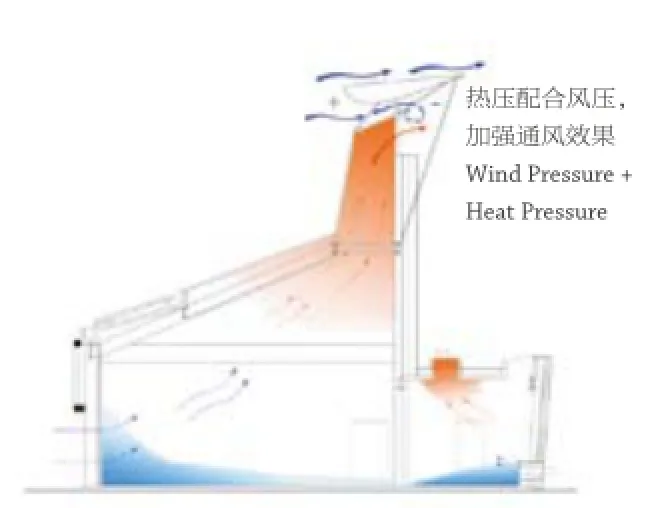北京动物园水禽馆,北京,中国
主持建筑师:宋晔皓
Principal Architect: SONG Yehao
北京动物园水禽馆,北京,中国
Waterfowl Pavilion of Beijing zoo, Beijing, China, 2014
主持建筑师:宋晔皓
Principal Architect: SONG Yehao


1-3 外景/Exterior view
项目信息/Credits and Data
设计团队/Design Team: 王丽娜,孙菁芬,解丹/WANG Lina, SUN Jingfen, XIE Dan
绿建咨询/Consultant for Green Building: 林波荣教授工作室/LIN Borong Studio
现场总协调/Project Manager: 张达/zHANG Da
工程团队/Construction Team: 北京清城华筑建筑设计研究院有限公司/Beijing THCA Architectural Design & Consulting Institute Co. Ltd
建筑面积/Floor Area: 335m2
摄影/Photos: 孙菁芬/SUN Jingfen
北京动物园管理委员会结合湿地修复,计划在动物园水禽岛修建集水禽栖居、对外展示及科普教育为一体的场馆。场地内植被覆盖率达90%,有百年树龄的黑杨若干,南侧为水禽栖居湿地。为用最少的自然代价给水禽建设宜居的环境,项目尽可能地采用被动式的设计策略建造一座低碳、微能耗的示范建筑。
水禽馆按使用对象分为两个区域:水禽区和人的活动区。前者为朝南的高空间,既可获得充足的阳光,又便于鸟儿进入湿地;后者包括展厅、会议室、机房等。朝南的会议室可自然采光通风;朝北的展厅和机房,开窗少,可提高围护结构效率。设计中另一重要的被动式策略是利用自然通风:建筑顶部设置两座2m×2m×3.5m、开口面积为50%的捕风塔,通过热压的原理达到自然通风效果。
The Beijing zoo has a superior natural environment with vegetation coverage of more than 90%. In this context the site of the Waterfowl Pavilion is especially green. To the south of the project site sits a large wetland area, a suitable habitat for the birds. To avoid destroying the ecology of the area and to provide a natural and livable environment for the birds, the pavilion was developed as a net zero energy demonstration building combining rigorous green and low carbon criteria.
The Waterfowl Pavilion consists of two zones each with a different design target. The open space bird habitat is located to the southern limit of the building for easy proximity to the natural environment and to ensure sufficient exposure to sunlight. The pavilion's "people zone" includes an exhibition hall, meeting room and facilities spaces. Balancing the organizational demands of form and function, the building was developed in two layers of nested spaces. The Bird House and meeting room face south enjoying full use of natural light and solar energy, while the exhibition hall and other program spaces face north. Natural ventilation is another important passive strategy incorporated into the design of the Waterfowl Pavilion. Two massive wind catchers (2m x 2m x 3.5m, with 50%-opening 2m2) are located on top of the building, providing buoyancy-driven ventilation.

4 总平面/Site plan

5 平面/Floor plan

6.7 剖面/Sections

8 通风示意/ventilation

